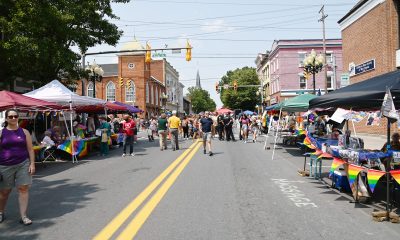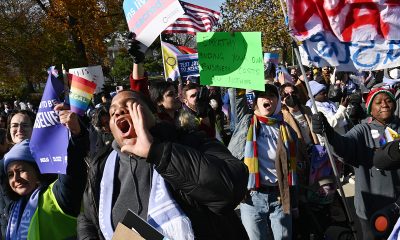Living
Pride in the Panhandle
W.Va. may be ‘wonderful’ but gays in its eastern tip see room for improvement
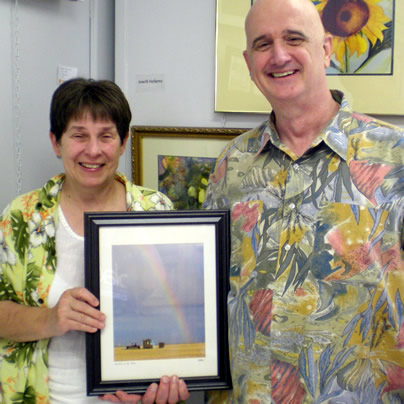
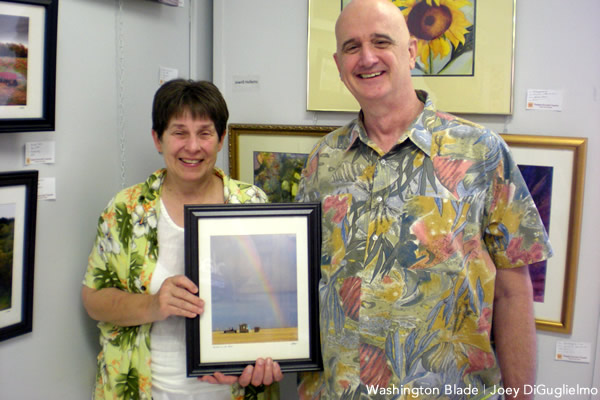
Marla Seymour and John Mason, officers of a new group called Eastern Panhandle LGBTQ Alliance of West Virginia. (Washington Blade photo by Joey DiGuglielmo)
MARTINSBURG, W.Va. — What’s it like to be LGBT in West Virginia? Gay and lesbian residents there say that although it’s not as bad as it could be, there’s still a lot of work to be done.
The state’s Eastern Panhandle — parts of which include quaint towns like Harpers Ferry, Berkeley Springs and Shepherdstown that are sometimes destinations for Washington residents who want to venture beyond the hustle and bustle — is a distinct region.
Martinsburg, in Berkeley County, is just more than 60 miles from Washington and sits along an interesting stretch of Interstate 81 where one can drive through Virginia, West Virginia, Maryland and Pennsylvania in about 45 minutes. The other two counties in the Panhandle — Jefferson and Morgan — are also easy to navigate, the former especially where it’s not uncommon to find residents who work in the D.C. Metro area but are drawn to West Virginia for its drastically more affordable real estate prices.
The tri-county area is also home to many same-sex households; same-sex marriage is illegal here although it’s not one of the 31 states that have constitutional amendments banning it. According to Williams Institute analysis of 2010 Census data, Jefferson and Berkeley are the two counties with the most same-sex households (Morgan contains drastically fewer). Jefferson has 6.29 per 1,000 households; Berkeley 5.69. Kanawha County includes the state capitol, Charleston, and has a PFLAG chapter, a gay men’s chorus and is home to the state’s LGBT activist group Fairness West Virginia, yet it sits fourth overall in the state for number of same-sex households.
And while Democrats have a stronghold in government here — they currently hold the governorship, both Senate seats and both houses of the state legislature — West Virginians are still considered largely conservative and have supported the Republican candidate for president in every election since 2000.
A new group called Eastern Panhandle LGBTQ Alliance of West Virginia formed in mid-June, its retired organizers realizing they had time on their hands and sensing a need for more interaction among the Panhandle’s gay residents than currently exists.
John Mason came out in 2000 after many years as a family man with two daughters and dual careers in the telecom industry and as an evangelical pastor of a non-denominational Bible church he formerly led in Potomac, Md. He moved to Jefferson County about eight years ago and is neighbors with Marla Seymour, a lesbian who came here from Frederick in 2002.
“Marla and I were talking in her living room one night and we were kind of like, ‘OK, what are we going to do now,’” Mason says over coffee at Jumpin’ Java Café in downtown Charles Town, W.Va., a small town in Jefferson County. The café is one the new group has targeted as gay affirming in a church-and-business directory it’s compiling.
“The light bulb really came on for both of us,” he says. “We just feel this is the perfect option. We’ve got at-risk kids with suicide, kids who have no support, who are homeless because they’re gay and we thought, ‘This is really what we need. We need a resource beyond the internet where there are actual people that these kids can talk to and find support, find community, have social interaction with other gay people. … With the Supreme Court decisions on Prop. 8 and DOMA, we’ve got a lot of momentum going and we’ve got to tap into it and see what we can draw out of it for the LGBT community here.”
The group has elected officers, is working on mission and vision statements and has a Facebook page that has attracted about 2,000 “likes.” The first fundraiser, a drag bingo, is scheduled for Sunday evening from 6 to 10 p.m. at The Club (5268 Williamsport Pike, Martinsburg), the only gay bar in the area. Organizers say they also want to start a PFLAG chapter, an LGBT alcoholics anonymous group and have a Pride event next summer.
“It may just be a covered dish picnic, but it will be something,” Seymour says.
Ally Susan Pellish took kids of parents who attended the first steering committee meeting out for ice cream so the adults could strategize. She’s been involved with AIDS work in the region for years and says she supports the new group wholeheartedly.
“It’s a great opportunity for the residents of West Virginia to see what a viable community we have and how diverse it is and how wonderful the integration can be as it should be,” she says.
Though she loves the area, she says it has its downfalls.
“I know there are children here who have been banned and disowned and have no place to go for Christmas, for the holidays,” she says. “That kind of injustice is just beyond my comprehension.”
Others in the state are also expressing support.
Coby Myers, owner of the Club and gay himself, says supporting charitable and LGBT-affirming groups such as the Alliance is central to his business plan (since opening in January, he says the Club has “done very well.”).
“The Eastern Panhandle has never had anything like this and we have a very large LGBT community here that people don’t really recognize,” Myers says. “I’m all about helping them raise money for whatever will benefit them and the community.”
Attorney Stephen Skinner lives in the Panhandle, founded Fairness West Virginia in 2006 and is the state’s first openly gay elected official. He’s a Democrat in the West Virginia House of Delegates. He called the Alliance effort “noble” and says he’s “delighted to support any group that works toward equality.”
Casey Willits is the executive director of Fairness West Virginia as of May and says although his group is working more on the legislative front — the Alliance is working to attain 501c3 status, which would prevent it from lobbying — he’s excited to see what the group will accomplish.
“It’s so great to see people that are passionate about their community,” he says. “I’m just thrilled that people take it seriously enough that they feel called to take action.”
Mason, who says he’s been devoting about six hours a day to the group, says several goals lie on the immediate horizon — a website beyond the Facebook page, a resource guide to include LGBT-friendly businesses, churches and service groups in the region, an investigation and possible resource sharing with campus and high school alliance groups in the area (there are rumored to be two GSAs at Panhandle high schools but the Blade could not immediately confirm this), the aforementioned PFLAG chapter and more.
As for downsides both encountered or feared, Mason and Seymour say the region’s largely bedroom community type of atmosphere could be problematic. They both know of many gay and lesbian older couples that have second homes or have retired here and aren’t interested in this kind of thing.
“It is a concern of mine that we may bump up against a gay wall,” Seymour says. “I think there may be gay people here who aren’t especially interested in change. I don’t think they would do anything to intentionally harm us, but I think that could be a big bucket of gay support we’d be missing and it concerns me. … Those people are established, they’re comfortable, they come here to get away. They don’t really want to be part of this umbrella or this resource. They come here to vacate, not engage and that’s a different battle entirely. Some of them have supported us but not a lot.”
Mason says his biggest goal is letting young LGBT people know they’re not alone.
“We want to tell them to come join us,” he says. “You may have been born into a conservative family, born into a conservative church, but you can choose your family and we can be that family for you. … We want to provide support, encouragement and resources for that younger gay person who just has no support.”
Real Estate
Celebrate the power of homeownership this Fourth of July
Owning a home is powerful act of self-determination

This Fourth of July, celebrate more than independence: celebrate the power of LGBTQ+ homeownership. Explore resources, rights, and representation with GayRealEstate.com, the trusted leader in LGBTQ+ real estate for over 30 years.
Home is more than a house: it’s a symbol of freedom
As the fireworks light up the sky this Fourth of July, LGBTQ+ individuals and families across the country are not just celebrating the nation’s independence — they’re celebrating personal milestones of freedom, visibility, and the right to call a place their own.
For many in the LGBTQ+ community, owning a home represents more than stability — it’s a powerful act of self-determination. After generations of discrimination and exclusion from housing opportunities, more LGBTQ+ people are stepping into homeownership with pride and purpose.
Why homeownership matters to the LGBTQ+ community
While progress has been made, LGBTQ+ homebuyers still face unique challenges, including:
- Housing discrimination, even in states with legal protections
- Limited access to LGBTQ+ friendly realtors and resources
- Concerns about safety and acceptance in new neighborhoods
- Lack of representation in the real estate industry
That’s why the Fourth of July is a perfect time to reflect not just on freedom as a concept, but on how that freedom is expressed in the real world — through ownership, safety, and pride in where and how we live.
Finding LGBTQ+ Friendly Neighborhoods
One of the top concerns for LGBTQ+ buyers is whether they’ll feel safe, accepted, and welcome in their new neighborhood. Thanks to evolving attitudes and stronger community support, many cities across the U.S. now offer inclusive, affirming environments.
Some of the best cities for LGBTQ+ home buyers include:
- Wilton Manors, Fla. – A vibrant LGBTQ+ hub with strong community ties
- Palm Springs, Calif. – A longtime favorite for LGBTQ+ homeowners
- Asheville, N.C. – Progressive and artsy, with growing LGBTQ+ visibility
- Portland, Ore. – Inclusive, eco-conscious, and diverse
- Philadelphia, PA – Rich in history and LGBTQ+ community leadership
When you work with an LGBTQ+ friendly realtor, you get insight into more than property values — you get a real perspective on where you’ll feel most at home.
Navigating the real estate process with confidence
Whether you’re a first-time gay homebuyer or preparing to sell your home as an LGBTQ+ couple, it’s essential to understand your rights and options. Here are a few key tips:
1. Work with a trusted LGBTQ+ real estate agent
Representation matters. A gay realtor, lesbian real estate agent, or LGBTQ+ friendly agent understands the unique concerns you may face and advocates for you every step of the way.
Use GayRealEstate.com to connect with LGBTQ+ real estate agents near you. For over 30 years, we’ve helped LGBTQ+ buyers and sellers find their ideal home and a professional who respects their identity.
2. Know your legal protections
While federal law (via the Fair Housing Act and Supreme Court rulings) prohibits housing discrimination based on sexual orientation or gender identity, enforcement can vary by state. Make sure to research:
- State-level housing discrimination laws
- Local LGBTQ+ protections and resources
- What to do if you experience discrimination during a transaction
3. Secure inclusive financing
While most lenders follow fair lending rules, it’s smart to seek out banks or credit unions with LGBTQ+ inclusive policies and a history of non-discriminatory lending practices.
4. Plan for the future as a family
For same-sex couples, especially unmarried partners, it’s vital to review how you’ll hold the title, designate beneficiaries, and plan your estate.
Ask your agent or attorney about:
- Joint tenancy with right of survivorship
- Living trusts
- Powers of attorney and healthcare proxies
Selling a home as an LGBTQ+ homeowner
If you’re listing your home, working with a gay-friendly real estate agent ensures your identity and story are honored — not hidden — in the process.
Highlight:
- Your community connections
- Your home’s role in creating a safe space
- Local LGBTQ+ resources to attract like-minded buyers
Showcasing the full value of your home includes sharing what it meant to live there authentically and safely.
Your home, your freedom
The Fourth of July reminds us that freedom isn’t just an abstract idea — it’s lived every day in the spaces where we find comfort, love, and belonging. For the LGBTQ+ community, the right to own and thrive in a home is part of the larger journey toward full equality.
At GayRealEstate.com, we believe every LGBTQ+ person deserves:
- A safe place to live
- A community that welcomes them
- An advocate in the home buying or selling process
Ready to make a move?
Whether you’re dreaming of your first home, upgrading with your partner, or selling a space that helped shape your identity, GayRealEstate.com is your trusted partner. With our nationwide network of gay realtors, lesbian real estate agents, and LGBTQ+ friendly professionals, we make your journey smooth, respectful, and informed.
Visit GayRealEstate.com to:
- Search LGBTQ+ friendly homes
- Connect with inclusive real estate agents
- Access free guides for buyers and sellers
- Protect your rights and get expert advice
This Fourth of July, celebrate more than independence — celebrate your freedom to live, love, and own with pride.

Did you melt like the Wicked Witch of the West this week?
As summer temperatures rise, keeping your home or apartment cool during a heat wave can become both a comfort issue and a financial challenge. One of the most effective ways to keep a home cool is to prevent heat from entering in the first place. Sunlight streaming through windows can significantly raise indoor temperatures. Consider the following solutions:
• Close blinds or curtains during the hottest parts of the day. Blackout curtains or thermal drapes can reduce heat gain by up to 30%.
• Install reflective window films to block UV rays and reduce solar heat without sacrificing natural light.
• Use outdoor shading solutions such as awnings (yes, the ones you removed because they were “dated”) and shutters to limit direct sunlight.
Fans are a cost-effective way to circulate air and create a wind-chill effect that makes rooms feel cooler.
• Ceiling fans should rotate counterclockwise in the summer to push cool air down.
• Box fans or oscillating fans can be placed near windows to pull in cooler evening air or push hot air out.
• Create a cross-breeze by opening windows on opposite sides of your home and positioning fans to direct airflow through the space.
• For an extra cooling effect, place a bowl of ice or a frozen water bottle in front of a fan to circulate chilled air.
To optimize natural ventilation, open windows early in the morning or late in the evening when outdoor temperatures drop. This allows cooler air to flow in and helps ventilate heat that built up during the day.
Appliances and electronics generate a surprising amount of heat. To reduce indoor temperatures:
• Avoid using the oven or stove during the day; opt for no-cook meals, microwave cooking, or grilling outside.
• Run heat-producing appliances like dishwashers and clothes dryers in the early morning or late evening.
• Unplug electronics when not in use, as even standby power can add heat to your space.
• Switching to energy-efficient LED lightbulbs can also reduce ambient heat compared to incandescent lighting.
If you do use an air conditioner, maximize its effectiveness by:
• Setting it to a reasonable temperature—around 76–78°F when you’re home and higher when you’re away.
• Cleaning or replacing filters regularly to maintain airflow and efficiency.
• Sealing gaps around doors and windows to prevent cool air from escaping. (Didn’t we all have a parent who said, “Close the door. You’re letting all the cool out?”)
• Using a programmable thermostat to optimize cooling schedules and reduce energy use.
If it is not cost-prohibitive, adding insulation in attics and walls can greatly reduce heat transfer. Solar panels that reflect heat can also help, as well as offset the cost of their installation. Adding weatherstripping around doors and windows, sealing cracks, and using door sweeps can make a significant difference in keeping heat out and cool air in.
Natural and eco-conscious methods can also help cool your home.
• Snake plants, ferns, or rubber trees can improve air quality and slightly cool the air through transpiration.
• White or reflective roof paint can reduce roof temperatures significantly.
• Cooling mats or bedding can make sleeping more comfortable without cranking up the A/C.
For renters or those who can’t make permanent modifications, there are still plenty of ways to keep cool.
• Use portable fans and A/C units instead of built-in systems, making sure they are the correct size for your space.
• Removable window film or static cling tinting can reflect heat without violating your lease.
• Install tension rod curtains or temporary blackout panels instead of hardware-mounted window coverings.
• Add draft blockers and weatherstripping tape that can be applied and removed without damage.
• Cover floors with light-colored rugs to reflect heat rather than absorb it.
• If allowed, use temporary adhesive hooks to hang reflective materials or light-filtering fabrics over windows.
Even if your space is warm, you can still take steps to help your body stay cool.
• Wear light, breathable fabrics like cotton or linen.
• Stay hydrated and avoid caffeine or alcohol during peak heat hours.
• Take cool showers or use damp cloths on your neck and wrists to bring your body temperature down.
Keeping your home or apartment cool in the summer doesn’t have to be expensive or energy-intensive. With a few adjustments such as blocking sunlight, optimizing airflow, using fans effectively, and making renter-friendly upgrades, you can create a more comfortable indoor environment while keeping energy bills in check.
Valerie M. Blake is a licensed Associate Broker in D.C., Maryland, and Virginia with RLAH @properties. Call or text her at 202-246-8602, email her at DCHomeQuest.com, or follow her on Facebook at TheRealst8ofAffairs.
Real Estate
The world’s on fire and D.C. is on sale (sort of)
Prices are up, but then again, nothing makes sense anymore

ICE is disappearing people, revered government agencies are shuttering, and who knows if we’ll be in World War III next week? But can you believe prices in D.C. are actually still up 6.3% since last year? It doesn’t make sense, and perhaps that does make sense, because nothing seems to make any sense any more.
That said, there are some parts of our market that are truly suffering. The interest rates, which have been up, up, up for about four years now, are the ongoing rain on our market’s military parade. Combine that with 75,000 federal employees taking a buyout nationwide, and DOGE cuts eliminating around 40,000 federal jobs in the District (per estimates by the D.C. CFO), not to mention thousands of other job losses in non-governmental organizations due to funding and program cuts, and you’ve got a case of uncertainty, and downright unaffordability in the pool of otherwise would-be buyers.
This has had a marked impact on properties that starter-home buyers and low- to mid-level employees would otherwise buy, most notably condominium and cooperative apartment units. These properties have already slowed in our market thanks to the profound impact that higher interest rates have had on their monthly carrying costs—pair that with job insecurity, and a lot of condos are proving to be very difficult to sell indeed.
So how is the average sale price up in our market?
The increase is almost entirely due to the resounding strength of the single-family home market, especially in upper Northwest D.C., where it is still quite common to see bidding wars, even on properties pushing past the $3M mark. It seems that buyers in that echelon are less impacted by a few percentage points in the interest rate, and less concerned about their job security. Notably, those buyers are often married with children and have an absolute need for more space, must stay in the area due to one spouse’s job, or the kid’s friend group, regardless of whether the cost of owning is thousands of dollars more per month than it would have been in 2020 or 2021. The continued appreciation in these neighborhoods defies imagination.
So, what to do if you are not one of those lucky enough to be shopping for a $3M home? The short answer: wait. If you want more space, rent your current place out and learn the joys of being a landlord while someone else pays your mortgage. Need the equity from your current home to buy your next place? Get a home equity line of credit, or loan, and pull the equity out of your current place to buy the next one. Or—and I have never recommended this before in 21 years of being a Realtor—rent for a few years. Sure, I’d love to list and sell your condo so you can climb the real estate ladder, but it might just be a waste of time, money or both if you could just ride out this storm and sell in a DOGE-less future.
All this said, there are some condos that seem to be immune from this recent negative news. Anecdotally, it feels like it’s the truly special ones that do just fine no matter the market. Our recent listing in Capitol Hill had a view from every one of its 15 windows of the Supreme Court. Sold in five days with six offers. Another condo was on the top two floors of a townhouse and had the coolest black wood floors that gleamed like a grand piano. Sold in four days at full price.
So, all is not for naught if you have a condo or home in an area that people want to be in, with nice space, light, amenities and a certain je ne sais quois. And, as long as we have a democracy in a few years, my experience says our market will be back, stronger than ever, really soon.
David Bediz is a Realtor and mortgage loan broker for the Bediz Group LLC and Home Starts Here, LLC. Reach him at [email protected].
-
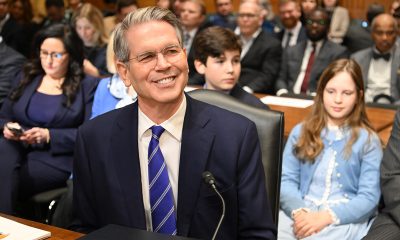
 Federal Government2 days ago
Federal Government2 days agoTreasury Department has a gay secretary but LGBTQ staff are under siege
-
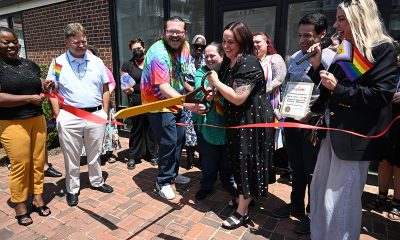
 Virginia3 days ago
Virginia3 days agoDefying trends, new LGBTQ center opens in rural Winchester, Va.
-

 District of Columbia2 days ago
District of Columbia2 days agoGay GOP group hosts Ernst, 3 House members — all of whom oppose Equality Act
-
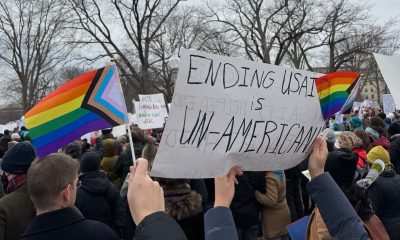
 Opinions4 days ago
Opinions4 days agoUSAID’s demise: America’s global betrayal of trust with LGBTQ people



